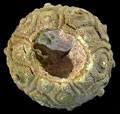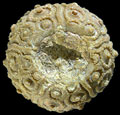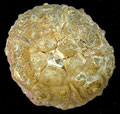The Echinoid Directory
Contributed by Andrew Smith, April 2007
Stereocidaris namadica Duncan, 1886, p. 87
[Cidaris namadicus Duncan, 1887, p. 87]
| Diagnostic Features |
|
|---|---|
| Distribution | Bagh Beds, Turonian-Coniacian, Upper Cretaceous, Madiar Pradesh, India |
| Type | Geological Survey of India |
| Classification and/or Status | A species of Stereocidaris |
| Remarks | Duncan, P. M. 1887. Note on the Echinoidea of the Cretaceous series of the Lower Narbada Valley, with remarks upon their geological age. Records of the Geological Survey of India 20, 81-92, 1 pl. |






